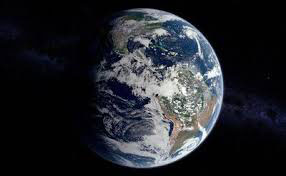Column: At the world’s edge
Northern Ireland

Jan 31, 2019
Have you ever stared long enough at a map that you notice those weird blotches and dotted lines? These are likely disputed territories, or unrecognized countries. “At the world’s edge” will look at some of these contested regions and examine them to better elucidate why these international irregularities exist and why they endure.
Tucked away in the northwestern corner of Europe is a small island called Ireland. With luscious green plains and rugged white cliffs on its azure coasts, Ireland is renowned across the world for its natural beauty, culture, language and history. Except there is a small problem: There are two Irelands.
A natural question arises when looking at a map of this emerald isle. Why is such a small nation carved into two even smaller units? To put it simply, because of settlement, repression and religion.
Generally speaking, the English treated Ireland as its “first colony,” as Marxist publicist Duncan Hallas put it in an essay in 1969. In the year 1169, English soldiers first stepped foot on Irish soil, and they would not leave for nearly a thousand years.
Centuries of settlement, displacement of the native Gaelic Irish and repression of Catholicism after the English Reformation left Ireland a starkly divided place. Scottish Presbyterians controlled a vast swath of the north of Ireland, while English Anglicans controlled valuable land in Dublin and in the central plains.
Starting in 1916, after several decades of a burgeoning Irish cultural movement inspired by the likes of George Bernard Shaw and James Joyce, Irish nationalism (mostly Catholic in orientation and Gaelic in language preference) became an armed resistance movement, achieving independence for five-sixths of the island in 1922. Today it is known as the Republic of Ireland.
The other one-sixth of the island became an exclave of the United Kingdom in Ireland, comprising an area roughly the size of Connecticut.
The next half century saw systemic discrimination against Catholics and Gaelic Irish speakers by the Protestant and Ulster-Scot dominated government of Northern Ireland.
Beginning in the late 1960s, Northern Ireland entered into a period known as “The Troubles,” when Irish nationalist militia groups, known colloquially as the Irish Republican Army or IRA fought militias that supported British nationalism called Ulster Unionists.
Terrorism was common in major urban centers across Northern Ireland. Bombings, assassinations and other forms of political and religious violence were often employed against defenseless targets: cafés, book stores, post offices and border posts.
Despite a peace agreement in 1998, many Northern Irish towns, neighborhoods and even city blocks still exist in a kind of voluntary segregation. It is very common to see communities founded on religious lines, which would literally wall themselves away from communities of other Christians.
With recent tensions over Brexit, fears of a new “hard border” dividing north from south and seemingly impassable gridlock in Belfast, many fear that tension could rise in Northern Ireland again. For even though there has been a long peace, the future could always spell trouble for this small island within an island.











